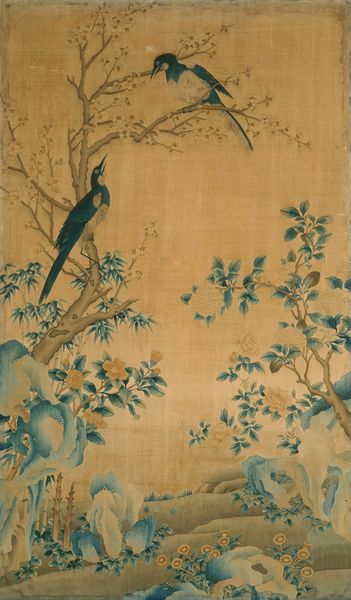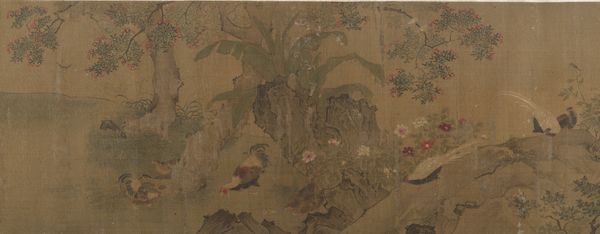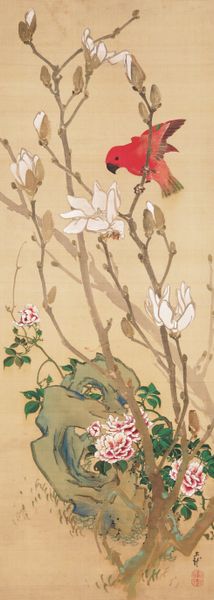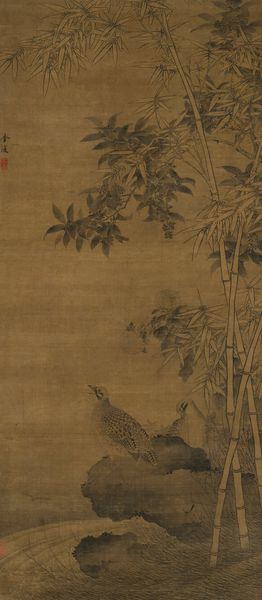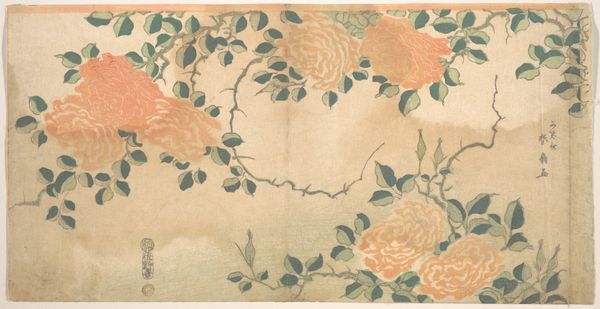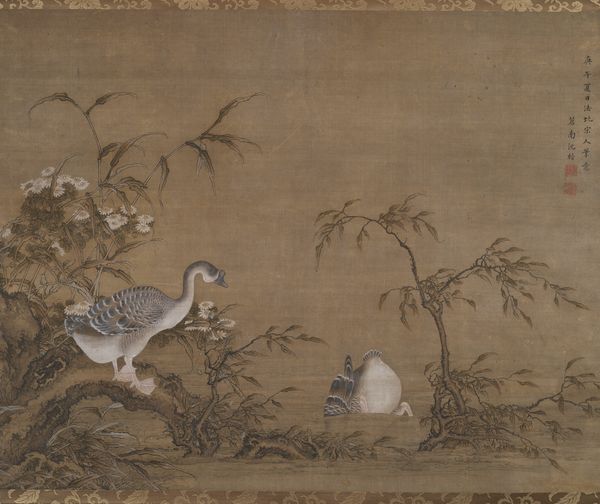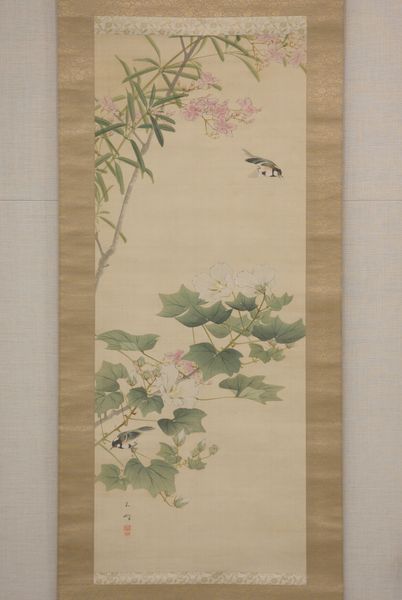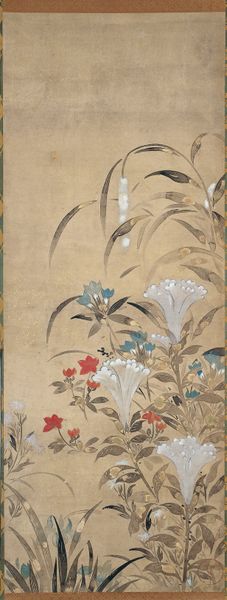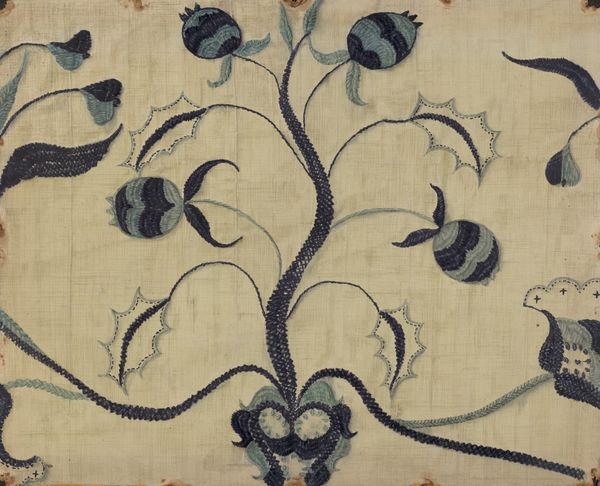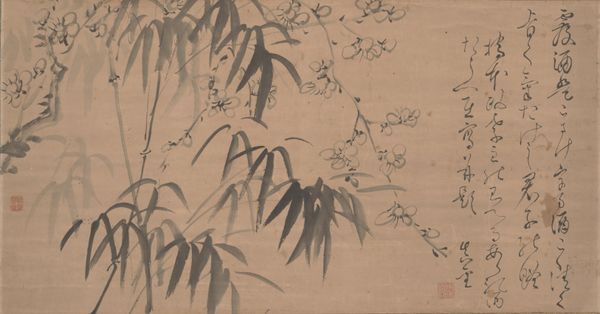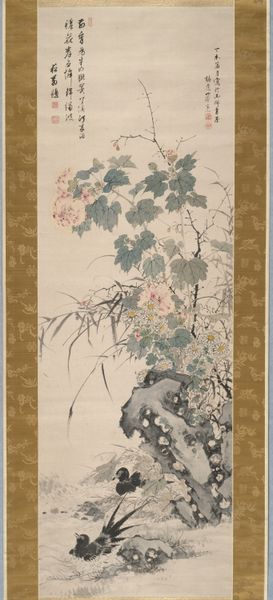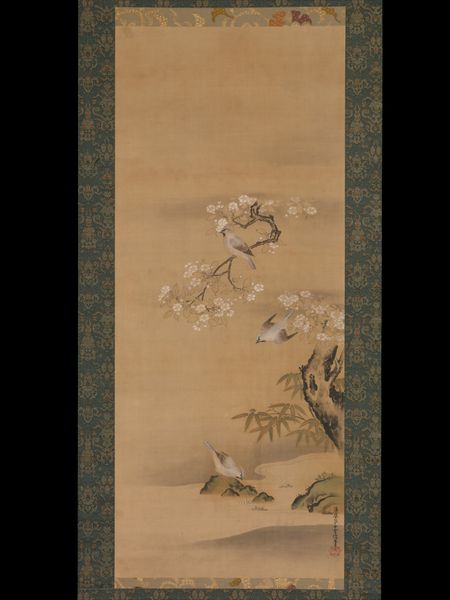
weaving, textile
#
asian-art
#
weaving
#
landscape
#
textile
#
folk-art
#
orientalism
#
china
Dimensions: 116.8 × 68 cm (46 × 26 3/4 in.)
Copyright: Public Domain
Editor: This textile panel, titled "Panel (Furnishing Fabric)", is from China, created sometime between 1644 and 1911. It reminds me of a serene, dreamlike landscape with its muted colors. What draws your eye when you look at this piece? Curator: I'm immediately interested in the material processes involved. The fact that this was intended as "Furnishing Fabric" is key. How does its function as a textile—something both beautiful and utilitarian—challenge our ideas of art versus craft? Considering its production, how did the availability and cost of dyes, the skill of the weavers, and even the loom technology influence its final form? Editor: That’s a perspective I hadn't considered. So you’re saying that the practical purpose of it is significant? Curator: Absolutely. Think about the social context of this piece. Was it for a wealthy merchant's home? A government official? How did its intended audience shape the imagery, the materials, and the overall design? The landscape motif, for example, could signify cultivated taste but might also reference an idealized pastoral existence quite different from reality. Editor: So, beyond just being decorative, it also reflects the values and aspirations of the society it was created in? Curator: Precisely. We must remember that textiles like these involved many hands and were often made in workshops. We have to ask whose labor produced this fabric? And how does knowing that influence our appreciation of the landscape depicted? Editor: It's amazing how a seemingly simple landscape scene can reveal so much about its creation and social context! I’ll definitely consider that next time I encounter a textile work. Curator: And remember, every knot, every dye choice tells a story. Keep digging into the material details. That’s where the real revelations are.
Comments
No comments
Be the first to comment and join the conversation on the ultimate creative platform.
